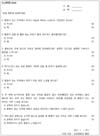1. Merskey H, Bogduk N. Classification of chronic pain. Description of chrnoic pain syndromes and definitions of pain terms. Seattle: IASP Press;1994. p. 181–182.
2. Sindrup SH, Jensen TS. Efficacy of pharmacological treatments of neuropathic pain: an update and effect related to mechanism of drug action. Pain. 1999; 83:389–400.
3. Dworkin RH, O'Connor AB, Backonja M, et al. Pharmacologic management of neuropathic pain: evidence-based recommendations. Pain. 2007; 132:237–251.
4. Kumar K, Taylor RS, Jacques L, et al. Spinal cord stimulation versus conventional medical management for neuropathic pain: a multicentre randomised controlled trial in patients with failed back surgery syndrome. Pain. 2007; 132:179–188.
5. Taylor RS. Spinal cord stimulation in complex regional pain syndrome and refractory neuropathic back and leg pain/failed back surgery syndrome: results of a systematic review and meta-analysis. J Pain Symptom Manage. 2006; 31:S13–S19.
6. Treede RD, Jensen TS, Campbell JN, et al. Neuropathic pain: redefinition and a grading system for clinical and research purposes. Neurology. 2008; 70:1630–1635.
7. Bennett MI, Smith BH, Torrance N, Potter J. The S-LANSS score for identifying pain of predominantly neuropathic origin: validation for use in clinical and postal research. J Pain. 2005; 6:149–158.
8. Choi SJ, Song JS, Kim C, et al. The use of magnetic resonance imaging to predict the clinical outcome of non-surgical treatment for lumbar intervertebral disc herniation. Korean J Radiol. 2007; 8:156–163.
9. Schönström N, Willén J. Imaging lumbar spinal stenosis. Radiol Clin North Am. 2001; 39:31–53.
10. Willén J, Danielson B, Gaulitz A, Niklason T, Schönström N, Hansson T. Dynamic effects on the lumbar spinal canal: axially loaded CT-myelography and MRI in patients with sciatica and/or neurogenic claudication. Spine (Phila Pa 1976). 1997; 22:2968–2976.
11. Ciric I, Mikhael MA, Tarkington JA, Vick NA. The lateral recess syndrome. A variant of spinal stenosis. J Neurosurg. 1980; 53:433–443.
12. Wildermuth S, Zanetti M, Duewell S, et al. Lumbar spine: quantitative and qualitative assessment of positional (upright flexion and extension) MR imaging and myelography. Radiology. 1998; 207:391–398.
13. Hansson P. Neuropathic pain: clinical characteristics and diagnostic workup. Eur J Pain. 2002; 6:Suppl A. 47–50.
14. Max MB. Clarifying the definition of neuropathic pain. Pain. 2002; 96:406–407.
15. Jensen TS, Sindrup SR, Bach FW. Test the classification of pain: reply to Mitchell Max. Pain. 2002; 96:407–408.
16. Backonja MM. Defining neuropathic pain. Anesth Analg. 2003; 97:785–790.
17. Cannon WB, Rosenblueth A. The supersensitivity of denervated structures. New York: The Macmillan Company;1949. p. 1–22.
18. Bennett M. The LANSS Pain Scale: the Leeds assessment of neuropathic symptoms and signs. Pain. 2001; 92:147–157.
19. Chung KJ, Lee JH, Hwang C, Ahn MW. A treatment guideline for neuropathic pain. J Korean Soc Spine Surg. 2011; 18:246–253.
20. Irving GA. Contemporary assessment and management of neuropathic pain. Neurology. 2005; 64:S21–S27.
21. Cho SY, Choi BO. Pharmacological treatments of pain. Headache. 2008; 9:13–20.
22. Rasmussen PV, Sindrup SH, Jensen TS, Bach FW. Therapeutic outcome in neuropathic pain: relationship to evidence of nervous system lesion. Eur J Neurol. 2004; 11:545–553.
23. Macnab I. Negative disc exploration. An analysis of the causes of nerve-root involvement in sixty-eight patients. J Bone Joint Surg Am. 1971; 53:891–903.
24. Goebert HW Jr, Jallo SJ, Gardner WJ, Wasmuth CE, Bitte EM. Sciatica: treatment with epidural injections of procaine and hydrocortisone. Cleve Clin Q. 1960; 27:191–197.
25. Herron LD. Selective nerve root block in patient selection for lumbar surgery: surgical results. J Spinal Disord. 1989; 2:75–79.
26. Lee SJ, Shim DM, Kim TK, Lee SI. Effectiveness of selective nerve root block for the treatment of radiculopathy in degenerative lumbar scoliosis. J Korean Soc Spine Surg. 2012; 19:52–58.
27. Shim DM, Kim TK, Oh SK, Choi YH, Lee SJ. Effectiveness of selective nerve root block on the need for surgical treatment of lumbar spine: a minimum 5 years follow up. J Korean Orthop Assoc. 2009; 44:118–122.
28. Shim DM, Park JY, Yang JH, Choi BS. Effectiveness of selective nerve root block on the need for surgical treatment of lumbar disc herniation. J Korean Orthop Assoc. 2008; 43:413–419.
29. Smith TE, Chong MS. Neuropathic pain. Hosp Med. 2000; 61:760–766.






 PDF
PDF ePub
ePub Citation
Citation Print
Print





 XML Download
XML Download